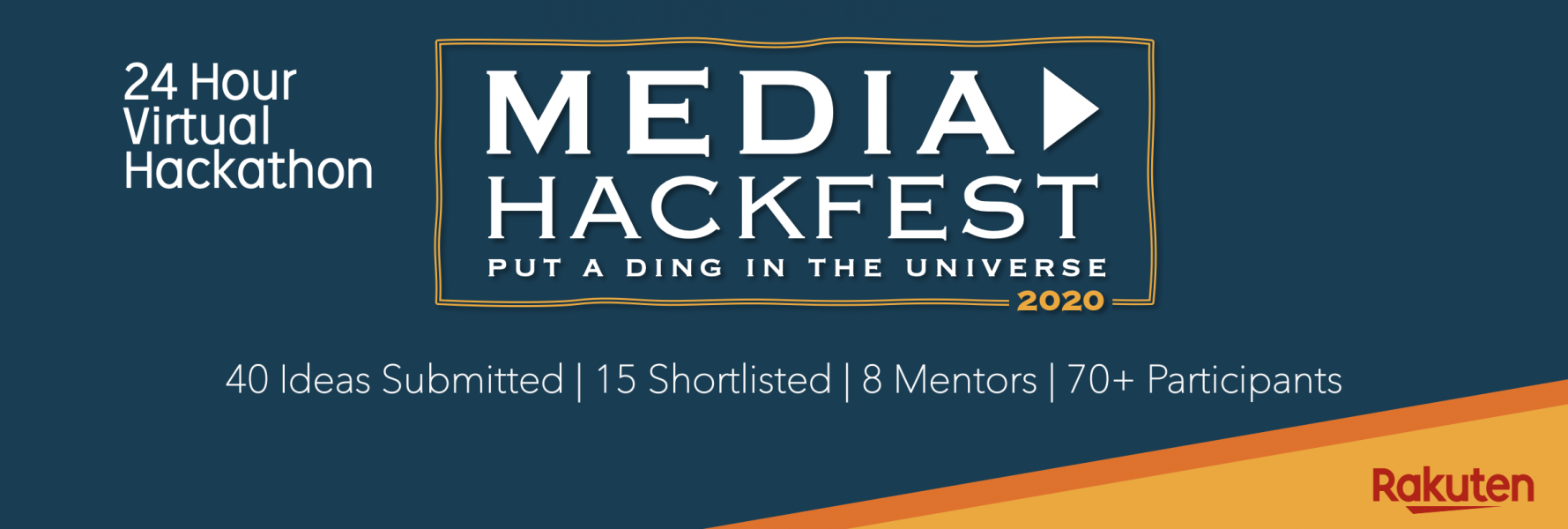
We, at Rakuten India, are working from home starting from 16th March 2020 due to the pandemic situation. Despite the situation, it’s business as usual for us, and continue to live by our Shugi Principles. We continue to collaborate closely with global teams, hire the best talent, launch new products, improve our end user-facing services, to provide maximum satisfaction to our customers.
Even in this pandemic situation, We in Media & Sports Department at Rakuten India conducted a 24 hour Virtual Hackathon.
Hackathons test the coding ability, push your limits for being innovative in a short span of time. Within 24 hours, you’re able to brainstorm, develop, test, and launch ready to use prototypes which can then be expanded to full-scale products.
The objective of this department-level virtual hackathon was to provide a platform for members to collaborate with different teams within the department to create bonding and also achieve new idea PoC, keeping morale high of teams considering we all are stuck without a social life.
We have experience of hosting Hackathons twice successfully at the Organization level, in 2018 and 2019. However, this was the first-ever Virtual Hackathon conducted at the department level, named “Media Hackfest” with a tagline “Put a Ding in the Universe”, a famous quote by Steve Jobs.
I would like to share the journey of Media Hackfest from its inception as an idea until it's a successful execution.
Step 1: Kicking off ideation phase
In the ideation phase, the ideas flow in a safe environment where participants can share their ideas. The process is simple - Coming up with ideas and sharing it with the committee.
The first step of the virtual hackathon is to go with simple questions. Participants don’t have to know all the details of their concept while submitting the idea. They can share the problem statement they want to solve and the potential solution. Rest to be figured out during the actual hack.
The committee should make all the submitted ideas public and share the list of ideas along with details to make it easier for the participants to find and scroll through.
Duration: 5 working days
What we experienced: Department comprises of about 75 members and we received around 40 ideas from employees within the department.
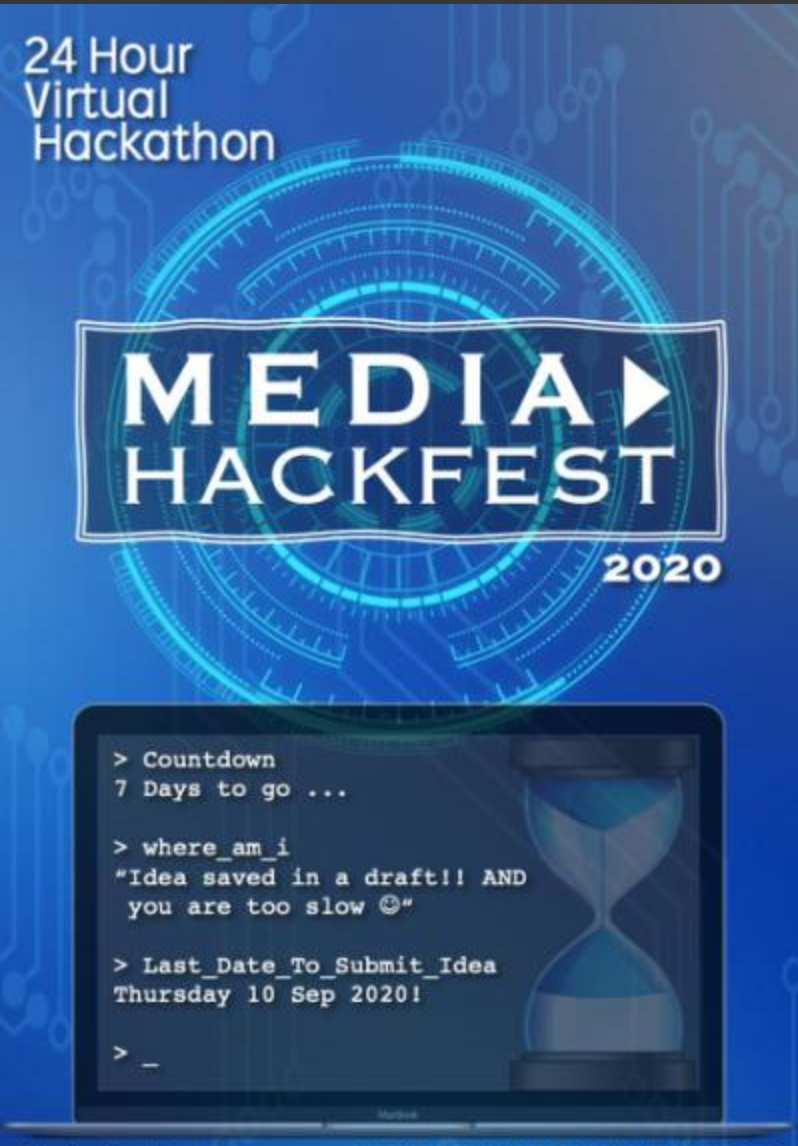
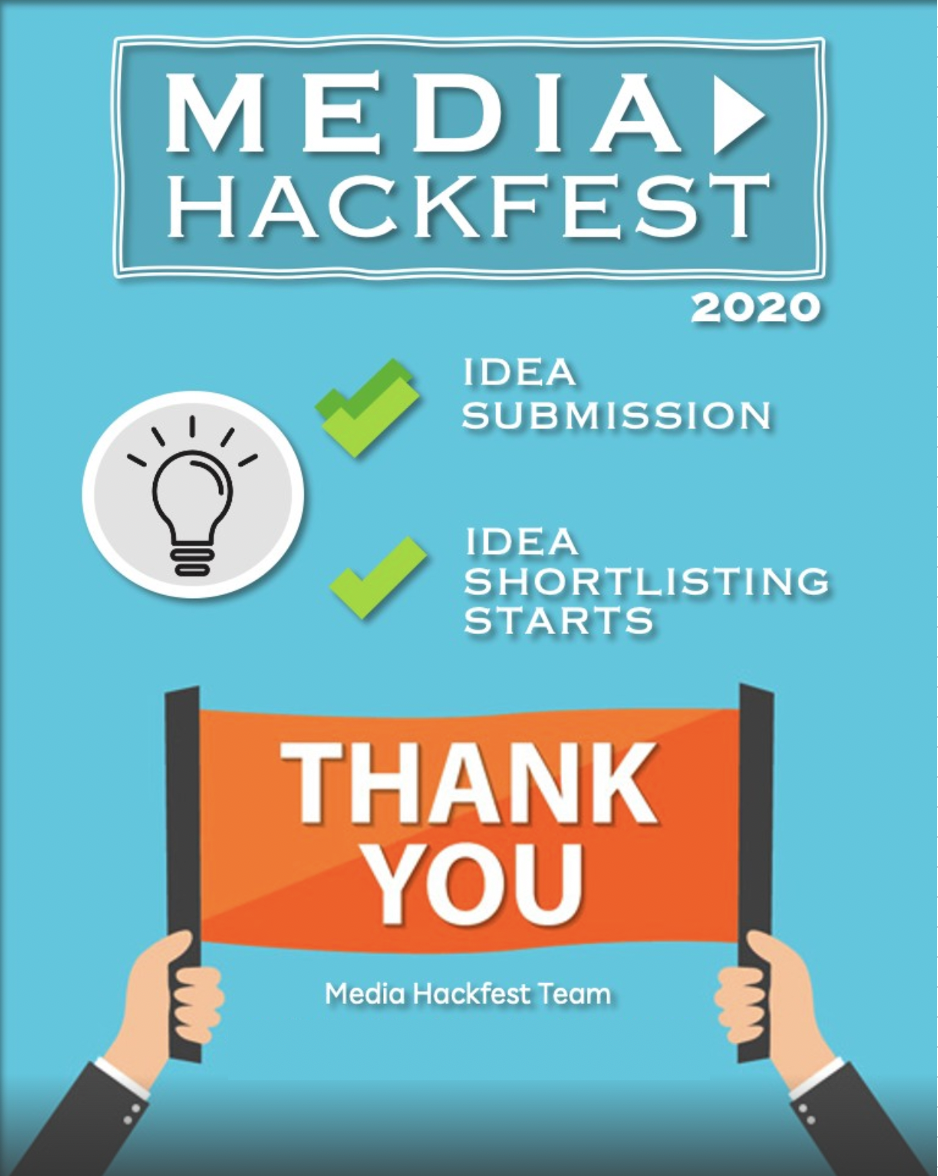
Step 2: Shortlist the Ideas
The committee should then shortlist the ideas based on the defined criteria.
Duration: 3 working days
What we did: Committee shortlisted 15 ideas from the 40 ideas that were submitted. The ideas were spread across both businesses as well as organizations including People Function, Department level initiatives. The criteria used to shortlist - Technical Feasibility, Business Impact/Potential, and Uniqueness.
Step 3: Assign a Mentor
Post shortlisting of Ideas, assign a mentor to each idea. This step is very important especially when you are doing at the department level so the engineers have the right guidance from SME.
Duration: 1 day
Our Experience: Assigned a mentor for each of the 15 ideas that were shortlisted for the hackathon.
Step 4: Team Formation
Announce the shortlisted ideas to all the team members and get the mentors to form the team.
Note: In case you have QA engineers in your teams, make sure you get them to participate and be part of the team. They add a lot of value in designing scenarios and ensuring the quality of the hack is good.
Duration: 5-7 working days
What we experienced: Mentors submitted their team names along with details of participants in their team. 15 teams were formed, each team was of 5 members, including a mentor.
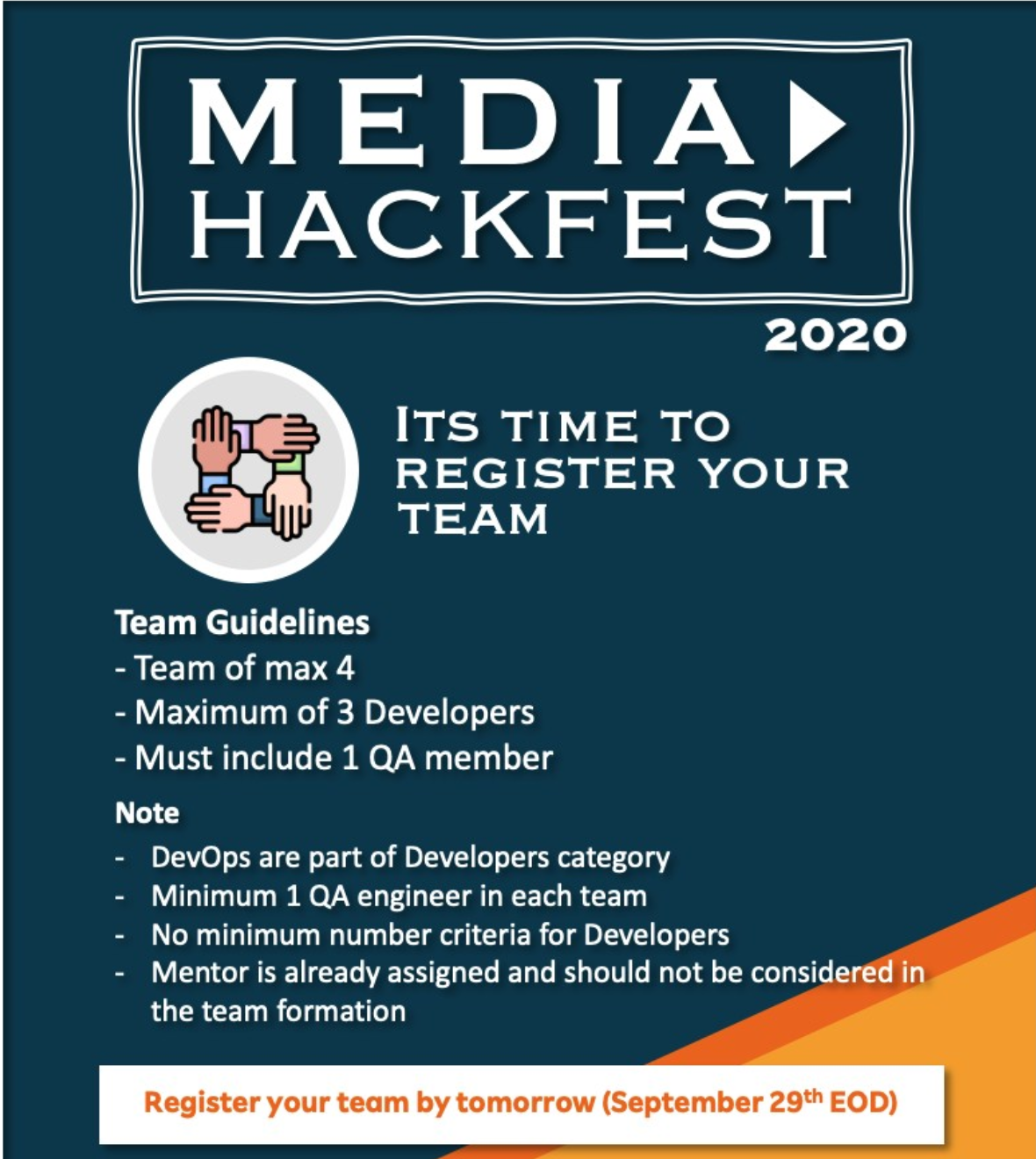
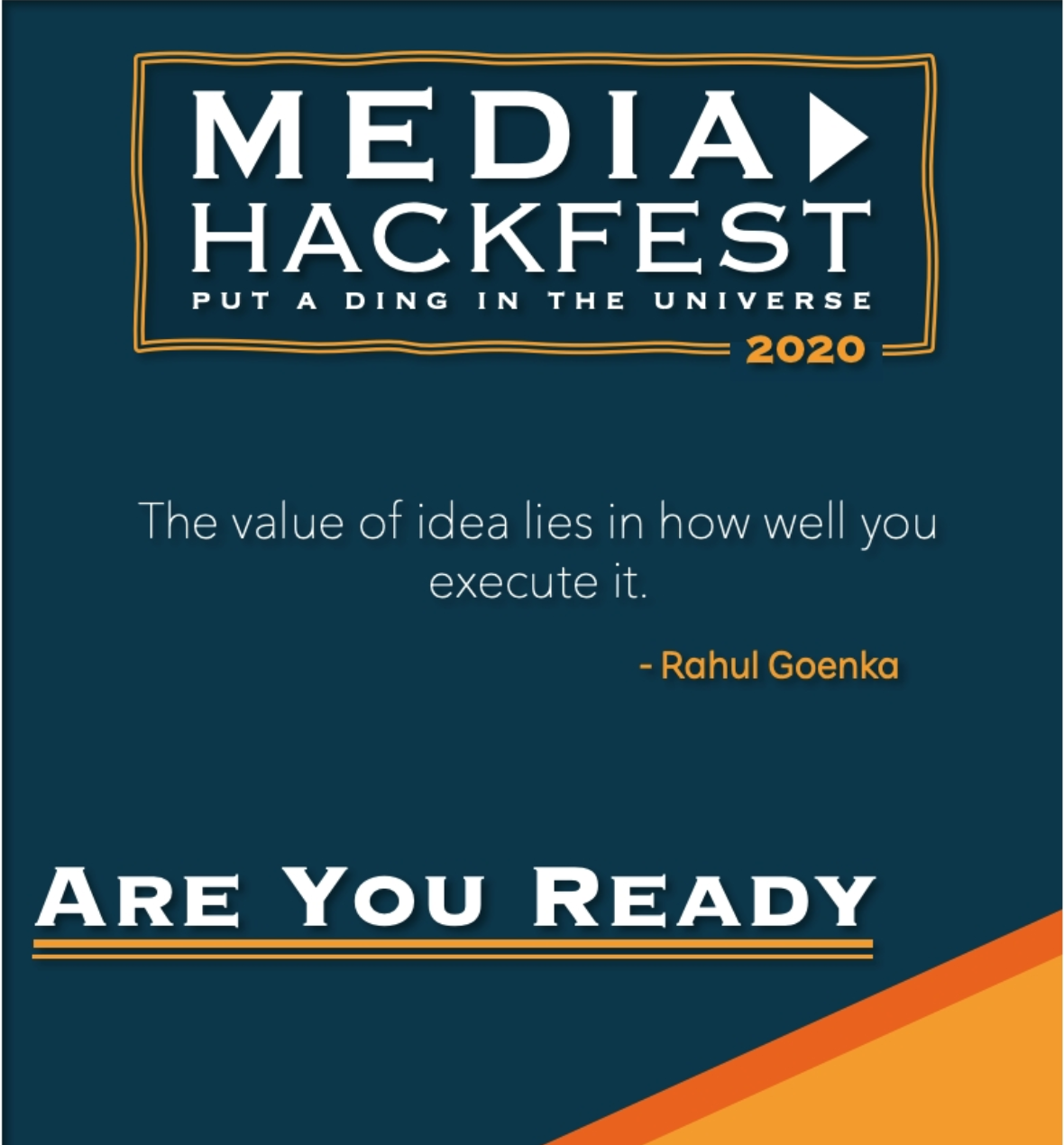
Step 5: Let the hack begin.
Open the event and let the 24-hour event begin where the teams will start coding and work towards achieving a product that can be demonstrated.
Duration: 24 hours
What we experienced: Zoom is an awesome tool that can be used to stay connected for 24 hours. We used one single zoom meeting to manage all 15 teams, the Jury room, and the control room. 15 breakout rooms were created and Committee members with host permissions sent the participants to their respective breakout room. Members with host permissions could hop to different breakout rooms, it was great fun.
Between Step 5 and 6, we held some fun events
We pulled back all the participants from their respective breakout rooms to the main room and conducted few planned fun activities. Like Quiz time at 3 AM and Yoga time at 6 AM. Exciting goodies sponsored by our CPO were given out to the winners.
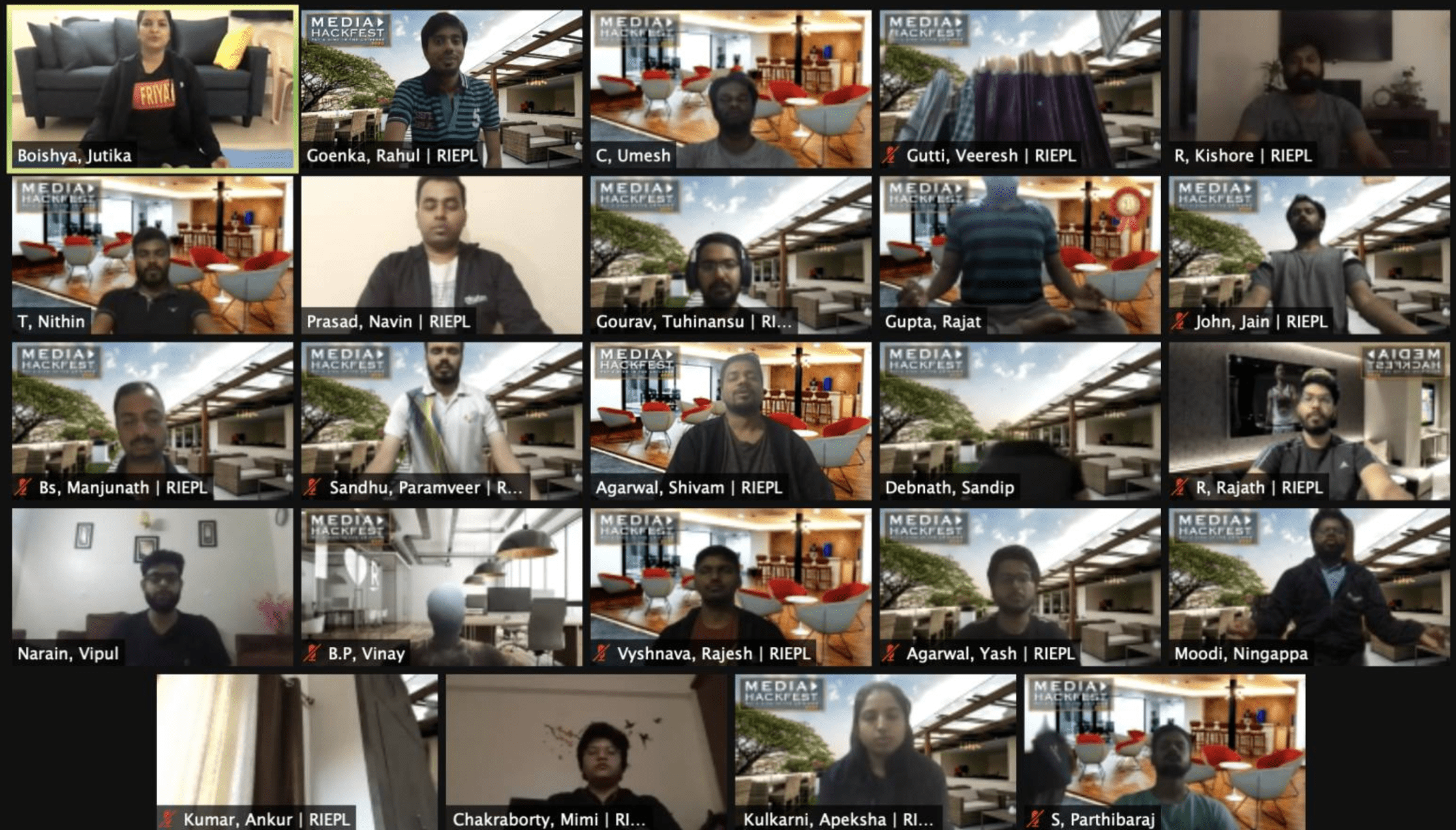

Step 6: Gather and evaluate the final submissions.
Now that the teams have formed and hacking is done, it’s time for the teams to submit and the juries to assess the final prototype of the ideas.
What we did: Invited Senior leaders from Rakuten India to evaluate the output of the event. A separate Jury room was created in the same meeting room where Jury members would be present and hosts would push the team to the Jury room. The team would present the case, give a demo of the hack, answer to Jury's questions, and return to the main room. And the next team would come into the Jury room. All 15 teams completed their presentations to the Jury.
Duration: 0.5 days.
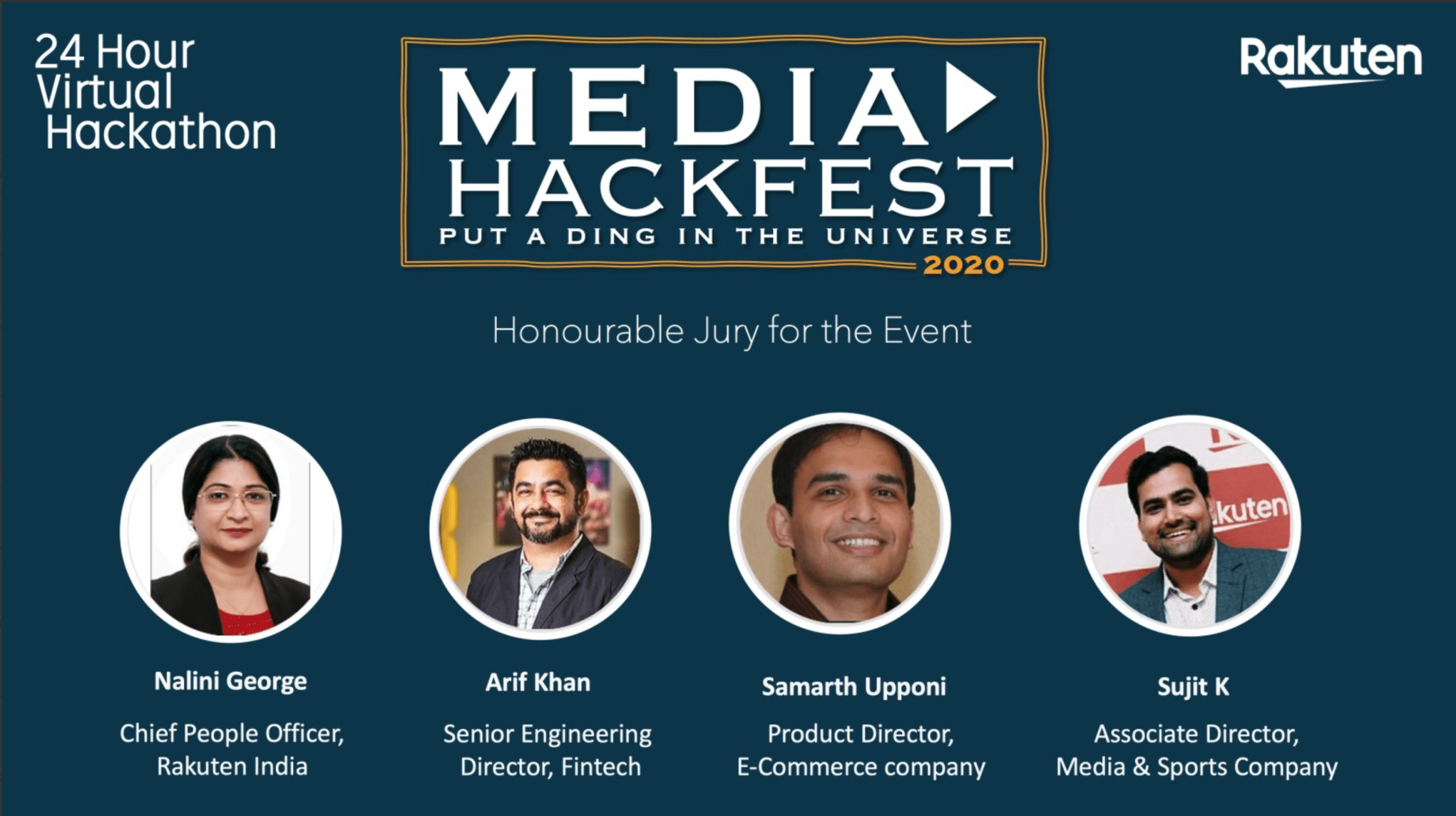
Step 7: Announcing the results.
Announcing the results is the most rewarding part of the hackathon. When the evaluators have scored the solutions, you can publish the top best solutions.
Winners should present their solutions to the entire team in another forum.
That is all! There are many things that can go wrong during a hackathon, and it's completely fine. Keep the moving pieces to a minimum during the event and with the right set of tools and better planning, you can lower the risks significantly.
The virtual format of Hackathon had greater success than it would have enjoyed in its physical form. Bringing all the participants back to the main room for conducting fun events, external mentors meeting each team separately was extremely easy in zoom whereas it would have taken a humungous effort to achieve this in a physical environment. When we couldn't hold a regular hackathon, we went virtual. This pandemic gave us a new way of making things work and we learned teams can also have fun virtually.
I hope you found this helpful. Feel free to reach out to me in case of any further questions.
Happy Hacking!




